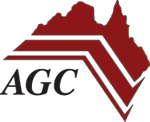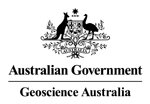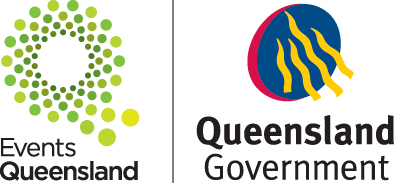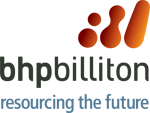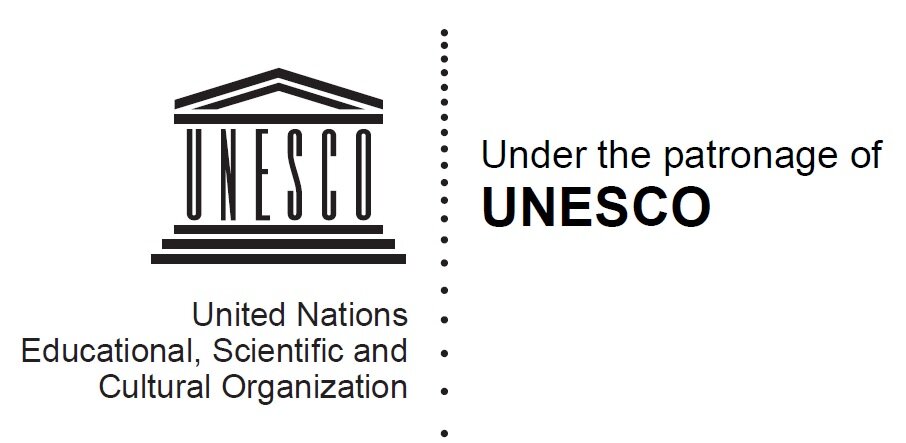|
The will be the largest global geoscience event ever held in Australia. The predominantly resources and energy focussed program will be an extremely important focus for Corporate attendance, sponsorship and exhibition opportunities. In fact approximately 40 percent of the whole program, which covers all aspects of the geosciences, will be of significant interest to industry, as outlined below. Each day of the Congress, will incorporate several industry-related sessions.
The IGC is a truly global meeting. Typically, over a hundred countries are represented, with more than 60 percent of delegates being international visitors. World authorities in a range of subjects will be attending, as well as delegates from many countries of the developing world. Particularly large contingents are expected from China and Russia, and delegates from across Africa will be supported by AusAID to participate in a sustainable mining workshop linked to the .
Furthermore, the incorporates the second congress of the Young Earth Scientists Network, which will attract bright early career geoscientists from around the globe, many of them aspiring for positions in Australia’s burgeoning Mining Industry.
This is quite literally, an opportunity “NOT TO BE MISSED”, which provides industry sponsors, exhibitors, delegates and participants with opportunities to meet and network with leading professionals in the global Geoscience Industry, particularly given the nature of the Technical papers covering Asia, Exploration, Mining, Ore Characterisation, and project development to name a few, it will be of significant interest to you and your team.
Therefore, the represents an unparalleled chance to showcase your company at the biggest Mining event in Australia.
Major releases of new information from central and eastern Asia
A feature of the IGC will be the presentation of the results from major collaborative initiatives in parts of Asia where available geological information has been limited until now. For example:
Geological and metallogenic responses to deep processes in eastern Asia and continental margins
The Chinese Academy of Geological Sciences (CAGS), A.P. Karpinsky Russian Geological Research Institute (VSEGEI), Mineral Resources Authority of Mongolia (MRAM), Korea Institute of Geoscience and Mineral Resources (KIGAM) and Kazakhstan’s Scientific Research Institute of Natural Resources (YUGGEO) have been collaborating since 2002 in major initiatives on deep processes, geology and metallogeny of Central and Eastern Asia. This Symposium will present the latest results of these major studies. It will exhibit the Atlas of Geological Maps (1:2.5M), comprising the geological, tectonic, metallogenic and energy resources maps. It will also reveal the lithospheric structure, geological evolution and metallogenesis, and explore the lithospheric structure and continental dynamics of central-eastern Asia and the western Pacific continental margin through a series of geotransects and seismic profiles penetrating key geological structures and orogenic belts.
SinoProbe – Deep exploration in China
SinoProbe is a big Chinese government-funded scientific program on geosciences. It has been taking a multidisciplinary approach to study the composition, structure and evolution of the continental lithosphere beneath the Chinese continent since 2008. This session will present major scientific results of SinoProbe achieved by both Chinese scientists and international collaborators. It will mainly include four long seismic profiles across the major orogens and basins of the Chinese continent and eastern Asia, broadband seismic profile in Qiangtang block, north and southeast China, seismic refraction images, nation-wide MT array, integrated detection over major ore districts, geochemical survey of deep process, deep scientific drillings, in-situ stress monitoring deployed in key areas and geodynamic modelling results for the Chinese lithosphere.
Greater Altai – a unique rare-metal-gold-polymetallic province in central Asia
The Greater Altai (GA) mineral province, located in the territories of Kazakhstan, China, Mongolia and Russia, is one of the oldest ore-mining provinces of the world. The province is rich in well-known pyrite-polymetallic deposits (with silver and gold) as well as deposits of gold, rare metals, iron, and nickel. In general, the geology and metallogeny is characterized by integrity and unity, against the background of a wide variety of geological environments and ore types. Despite a long history of geological study, there remain many unresolved and controversial issues in matters of stratigraphy, magmatism, geotectonics and especially metallogeny. The GA province can become a testing site for geologists around the world to study the whole spectrum of problems of geology and metallogeny. This Symposium encourages discussion of both fundamental and applied aspects of ore formation and patterns of ore distribution.
Mineral deposits: episodes, accumulation of metals and related geodynamic processes in China and adjacent regions
China, central Asian countries, Russia and Mongolia, and the eastern Eurasia continental margin, host a great variety of mineral systems, such as VHMS, porphyry-skarn, epithermal Au-Ag, orogenic lodes, orthomagmatic deposits in mafic-ultramafic complexes, vein-type polymetallic deposits, granite–related tin deposits. The Tethyan domain from southwestern China, westward to Iran and Afghanistan, and to southeast Asia, hosts mineral deposits comprising porphyry and porphyry–skarn Cu-Au-Mo, vein type Pb-Zn-Ag, Au and Sb lodes, and rare earth minerals in carbonatites. This session will provide a unique opportunity for geologists from all over the world to do comparative studies in the Eurasian countries.
Geological processes of the construction of Asia
Asia is a huge composite continent composed of large cratons and numerous small or micro-continental blocks joined together by a variety of orogens. The Phanerozoic making of Asia is a process still in progress. Processes include formation of oceanic crust to the last stages of the life of mountain ranges, the creation and disappearance of crustal material, a variety of provinces exposing igneous, metamorphosed, or sedimentary rocks, and various structures like ophiolitic suture zones, lithospheric faults, and large transcurrent faults. The mechanics of crustal extension, rapid opening of marginal basins floored with oceanic crust and subduction zones are also observable as active processes. In order to represent these geological features, considerable efforts have been put in the recent years into mapping program and syntheses like the IGMA5000, and into IGCP projects targeted on Asian geology. These endeavours have involved numerous Asian countries as well as many scientists of the international community.
Other industry-interest sessions
The wide variety and topical interest of other resources and energy focussed elements of the program is evident from the following Themes and Symposia:
Mineral resources and mining
This Theme will include a global perspective on mineral resources; leading edge technologies for increased automation and decreased wastes and mine site pollution; high technology commodities for the future; industrial minerals; advances in in-mine geophysics; resource definition, modelling, estimation and reporting; resource development techniques and issues over a range of commodity types; specialist sessions on industry issues and case studies for uranium, iron ore, diamonds, nickel, base metals, sampling and geometallurgy; future sources of industrial and construction materials
Mineral deposits and ore forming processes
As well continuing to play its essential role in global power production and steel making, new industries based on coal resources, such as coal seam gas, are emerging. Indicative Symposia topics include coking and thermal coal; water issues in coal mining and coal seam gas production; advances in coal mining; coal quality issues; new and emerging coal technologies including underground coal gasification.
Mineral exploration geoscience
This Theme will address the science of mineral exploration against the backdrop of increasing global demand for mineral resources. Indicative Symposia topics include: mineralising systems; the science of exploration targeting; exploration geophysics; advances in geochemical exploration; 3D geology and geophysics in targeting; deep exploration and discovery; quantifying and managing uncertainty and risk in exploration, and declining exploration success rates; major discovery case histories; exploration trends and emerging mineral districts.
Deep weathering through deep time: regolith processes and ore deposits
Regolith hosts or hides valuable mineral deposits. In many regions, there has been a long and complex history of weathering and landscape development, commonly under climates quite different from the present. Thus, understanding regolith architecture and age, as well as the processes that act within the regolith, are essential to address the challenges of developing sampling media for mineral exploration. We seek a broad range of contributions, including (1) regolith geochronology, (2) weathering and regolith-landscape processes (3) formation of soils, ‘laterite’, calcrete, bauxite etc (4) regolith sampling media in geochemical exploration and (5) formation of secondary mineral deposits.
Engineering geology in mining
Engineering geology is playing an increasing function in the investigation, design and operation of open pit and underground mining. The objective of this Symposium is to illustrate the high value that engineering geology can bring to all stages of mine development ranging from conceptual studies to mine operation in the improvement of economic optimisation and safety.
Geoscience Information from Proximal and Remote Sensing Technologies
Symposia in this theme will address how emerging “geoscience-tuned” sensed data from satellite, airborne, drill core, and other field sources can provide valuable information for the measurement, mapping and monitoring of geological processes. Indicative topics include: new “geoscience-tuned” sensing technologies; mineral, lithological and structural mapping; resource (minerals, hydrocarbon and geothermal) exploration; volcanic hazard assessment; mapping and monitoring of landforms, soils, biomass and water; natural disaster management; mine environmental baseline-inventories, monitoring and mine closure assessment; mapping planets/moons; methods for the measurement of (bio)physicochemistry; geoscience information product standards; seamless, integrated (with other geospatial data) 3D and 4D (temporal) mapping; and geoscience information delivery systems.
The origin and settings of Archean mineral systems
Preserved Archean mineral systems (Au, Ni-PGE, iron ore, VMS) are localised products of much larger Earth processes. This Symposium aims to discuss the importance of the nature and architecture of lithospheric-scale processes on the formation of mineral systems, and their development within the changing geodynamic evolution of the early Earth.
Metallogenic systems of the Proterozoic
Metallogenesis in the Proterozoic era is characterised by an extremely diverse metal systems and associated geodynamic settings. This Symposium will include all aspects of Proterozoic metal system including detailed deposit studies, regional tectonic controls of mineralisation, as well as temporal and spatial metal associations.
Uranium and thorium resources, supply and demand
This Symposium will cover scenarios for nuclear power over the next 50 years or so, drawing on information and analyses from the IAEA-OECD/NEA Uranium Group and others. It will consider the geological settings of uranium and thorium deposits, identified resources and resource potential, and future production and demand forecasts.
Marine minerals in Oceania
It is an exciting and pivotal time for marine minerals and mining in Oceania. Industry is gearing up for initial mining of sea floor volcanogenic massive sulfides (VMS), initially in the western Pacific. Marine aggregates for beach nourishment and construction materials continue to be the mainstay of marine mining in the region. Pioneer Investors are positioned with the International Seabed Authority for exploration and eventual mining of manganese nodules in the international waters of the Pacific. Other organisations are looking at these deposits in the Exclusive Economic Zones of island nations in the South Pacific. Exploration and assessment continues on cobalt-rich ferromanganese crusts on oceanic seamounts throughout the region. The IGC Symposium will encapsulate recent developments in marine minerals research in Oceania and serve as a snapshot of the situation in this field.
Environmental aspects of mining
The demand for mineral and energy resources is intensifying, yet their exploitation causes numerous environmental challenges: tailings repositories are known to fail; mine-derived contaminants may be dispersed; the quality of air, soil, sediment and water can be compromised; ecosystem, plant, animal and human health may be put at risk; and the long-term costs of mine site rehabilitation can be staggering. Over the next 100 years, an additional 2000 cubic kilometres of waste rocks and tailings will likely accumulate around the globe. This session will bring conference participants up to date with current environmental aspects of mining and highlight new frontiers.
Inclusions in minerals
Fluid and melt inclusions in minerals are powerful means to obtain knowledge about the properties, behaviors and origins of geo-fluids. They have been widely used to study igneous, metamorphic and sedimentary petrology, structural and stratigraphic analysis, metal and hydrocarbon deposit genesis and exploration. Fluid inclusions may preserve direct evidence for the presence and composition of ancient fluids that have long since left the sample. Melt inclusions may provide direct samples of the uncrystallized magma including its volatile contents. This session will provide an international forum for exchange of latest research results and ideas between geoscientists from academy, government and industry focusing on studies of fluid- and silicate-melt inclusions in minerals.
Sedimentation and Sedimentary Processes
Sedimentary basins host the world's hydrocarbon resources and substantial mineral resources. Indicative topics include geological basin evolution; sequence stratigraphy; clastic sedimentation; modern sedimentary processes; sedimentation in foreland, forearc, rift and strike-slip basins; sequence stratigraphy; large scale stratigraphic correlations; biostratigraphy; stratigraphic databases; diagenesis; evaporites; isotope and chemostratigraphy; sedimentary organic matter in modern and ancient systems.
Petroleum Systems and Exploration
Global demand for petroleum continues grow, driving the search for resources to new frontiers as well as the need to extract petroleum as efficiently as possible from existing basins. Indicative topics include petroleum geoscience - advances in seismic applications, petroleum geochemistry, other geophysical techniques, and applications of palaeontology; frontier petroleum basins - extending exploration in time and drilling depths; southern hemisphere petroleum prospectivity; enhanced oil recovery - horizontal drilling, reservoir fracturing, chemical methods, water/CO2 injection and re-injection; petrophysics - pressure, permeability and rock property predictions; advances in petroleum exploration - new ideas on prospectivity, basin modelling, source rock models, reservoir modelling; putting the geo into geophysics – use of potential fields in interpreting economic basement, structure and reservoir presence/quality, seismic sequence analysis, facies mapping and depositional environments.
Unconventional hydrocarbons
Unconventional hydrocarbon, notably shale gas and coal seam gas, have become a vital component of the North American domestic gas supply and are touted to have high potential to be the same in Europe, China, India and southeast Asia. In Australia, coal seam gas production is on the verge of a step change in production to supply a new LNG export industry. However, unconventional gas development has not been without its critics and environmental concerns. What are the lessons learned in North America and how can these be applied elsewhere? Technological advancement in oil sands and enhanced oil recovery has made these resources competitive even at low oil prices. CO2 enhanced recovery has the potential to add value not only in increased production but also as carbon storage in an emerging global carbon market. Symposia will focus on the unconventional hydrocarbons and their emergence as important future sources of energy including: transport fuels; coal seam gas, resources and extraction and water production and management; shale gas and tight gas resources and potential; and, gas hydrates, the ultimate unconventional hydrocarbon.
Energy in a carbon constrained world
Global demand for energy continues to grow strongly but at the same time pressure mounts to reduce greenhouse gas emissions to mitigate the impacts of rapid climate change. Symposia will explore issues and options for future energy use including: the future of fossil fuels; carbon capture and storage; geothermal energy including exploration and resource characterisation: renewable energy resources; nuclear energy – including uranium and thorium resources and demand, and nuclear waste disposal.
Coal – A myriad of resources
As well continuing to play its essential role in global power production and steel making, new industries based on coal resources, such as coal seam gas, are emerging. Indicative Symposia topics include coking and thermal coal; water issues in coal mining and coal seam gas production; advances in coal mining; coal quality issues; new and emerging coal technologies including underground coal gasification.
Geoscience information
This will comprise sessions on regional geoscience information activities and developments from Oceania, Africa, Asia, Europe and the Americas. The latest news from geoscience-related spatial data infrastructure development around the world, with particular reference to the pan-European INSPIRE initiative, the North American GIN and Geoconnections initiatives and the Australian AuScope project.
Geologists, resource exploration and development: an historical perspective
Given Australia’s extensive mining history, this Symposium will focus on resource discovery and development worldwide, including all minerals and petroleum, and the major role of earth scientists in any such developments.
|


